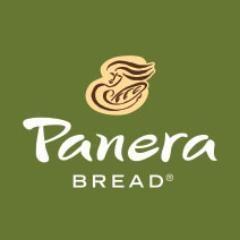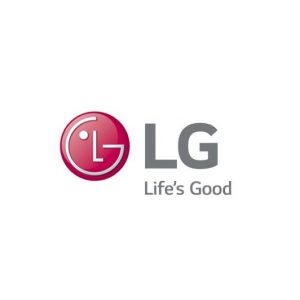A name is the most important identifier of a person, a brand, state, a village, a business, a nation, a pet etc. The name implies race, era, societal culture and religion. No wonder, people take time to name their children, their business, their pet, their memoirs etc. Names have meaning and they do suggest character, traits and acumen of a person/business/state/nation/ product. Each name has power, people work hard to make the name outstanding and influential, and it must be valued.
Beyond just a memorable logo and tag line, good branding adds to the value of a company. It provides employees with direction and motivation, and attracts more and more customers easily. A brand represents the total sum of people’s awareness and experience of an individual, a company, a product, a school, college, a university, a hospital, a park, an auditorium, a nation, a river, a mountain, a flower and infinite things. There are countless components which go in creating a successful brand.
In this article I will be discussing some examples of how names were created of certain brands.
Do you know that Pepsi was named after the medical term for indigestion? The inventor of Pepsi, Caleb Davis Bradham, originally wanted to be a doctor, but due to some crisis in his family, he left medical school and became a pharmacist instead, according to the company website. His original invention, identified as “Brad’s Drink,” was made from a mix of sugar, water, caramel, lemon oil, and nutmeg. Three years later, Bradham renamed his drink, which he believed helped digestion; so he named it as “Pepsi-Cola,” taken from the word upset stomach, meaning indigestion.
Panera Bread Company is a chain store of bakery-café fast casual restaurants in the United States and Canada. Panera combines two words “pan” and “era.” According to Panera’s Facebook page, the chain store’s name has Latin and Spanish roots. In Spanish, “pan” means bread and “era” means age or time. So put together, Panera means “age of bread.” And, in Latin it means breadbasket.
Google owes its name to a typographical error. Its name came forward from a brainstorming session at Stanford University. Founder Larry Page was coming up with ideas for a massive data-index website with other graduate students, according to a Business Insider report. One of the suggestions was “googolplex” one of the largest describable numbers. The name ‘Google’ came about after one of the students accidentally spelled it wrong. Larry Page thought of keeping the name as erroneously spelled and registered his company with this name.
McDonald is named after two brothers who ran a burger restaurant. Raymond Kroc, the founder of McDonald’s, used to sell milkshake machines. Once he met brothers Dick and Mac McDonald, who ran a burger restaurant in San Bernardino, California. The McDonald brothers bought several of Kroc’s Multimixers and he was so impressed by their burger restaurant that he became their agent and set up franchises around the US. Years later, he bought rights to the McDonald’s name.
Adidas is not an acronym for “All Day I Dream about Soccer”; it’s a fallacy of many people. It turns out the athletics-apparel brand is named after its founder, Adolf Dassler, who started making sport shoes when he came back from serving in World War I, according to the LA Times. The name combines his nickname, Adi, and the first three letters of his last name, Dassler.
Hans Wilsdorf, the founder of Rolex, the expensive watches wanted a brand name that could be understood and pronounced in any language. He tried combining the letters of the alphabet in every possible way. He thought of hundreds of permutations and combinations by setting and fixing the alphabets. But, none of them felt quite right. One morning, while riding on the upper deck of a horse-drawn omnibus along Cheapside in the City of London, the name “Rolex” struck in his mind and ears.
The name LG came from the merger of two companies, Lucky and Goldstar, the acronym of both companies. It was officially decided to use the brand name as LG. It is a conglomerate in South Korea. When the company started marketing its products to the west and English speaking countries the company rethought about its name using the same acronym as “Life’s Good” as a backronym (an acronym deliberately formed from a phrase whose initial letters spell out a particular word or words).
Nike is the Greek goddess of victory and she often represented with wings. Her presence symbolized victory and she was often depicted as sitting next to Zeus, the Greek god. The swish designed signifies her flight.
SONY the leading manufacturer of electronics products for the consumer and professional markets is headquartered in Minato, Tokyo, Japan. Sony comes from the Latin word ‘Sonus’ which means sound. And, ‘Sonny’ is a slang word used by Americans to refer to a bright youngster. The company was named after bright youngsters – Sonny boys working in sound and vision. The name Sony was also chosen because it could be pronounced easily in many languages.
Vodafone was formed under the Racal telecommunications brand and as was launched in January 1985 under the name Racal Vodafone Holdings Ltd. The name Vodafone is derived from three words which are of significantly important for the industry. The short explanation could be described with the naming formula voice, data and phone. The idea of this name came from Saatchi & Saatchi (the advertising agency) and one of the company’s original directors. It was the agency’s idea of spelling phone as “fone” which at first wasn’t accepted very well by the then CEO of Vodafone. Eventually he pondered over it and accepted the name. This is how the name “Vodafone” was born.
Brand building requires sincerity: Like we individuals have our personalities, style and image; brands also have their personalities. Brands make a personal connection with their customers. Just as people have values, goals, beliefs and even flaws, so do organizations. Customers connect with the brands if only they like them. The connection grows when brands deliver what is promised. Customers go by their own experience.
Organizations need to work on delivering exactly what they communicate regarding their brands. They need to decide on their brand’s personality traits and deliver them as promised. Over-promising and under-delivering turns out to be short-term marketing strategy. In fact, it’s often cheaper and easier to create hype, than providing genuine substance.
Initial marketing hype can create little success, but after it fades, organizations fall flat and struggle to retain customers and struggling for their existence. The core issue in branding exercise is maintaining the brand authenticity. And what is a brand? It’s a name!















































